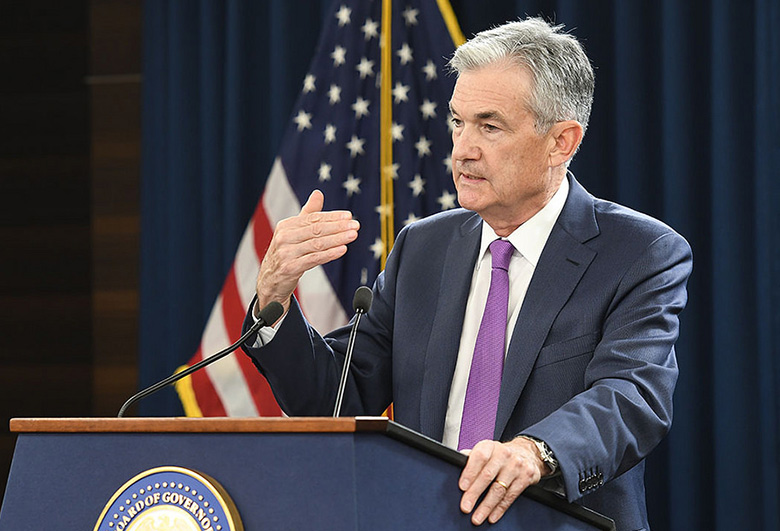Jerome Powell, chair of the Federal Reserve
For credit markets to operate, they need a functioning rates market beneath them. That is why the US Federal Reserve’s 100 basis point rate cut on Sunday night and its reopening of quantitative easing (QE) with the announcement of a $700 billion programme was both essential and yet also insufficient to stem financial market capitulation.
In a financial emergency, repairing channels for the flow of credit is the first priority. The destruction of paper wealth in equity markets will continue for now – albeit with upward spasms that traders will try to capture – spreading pain to long-term investors. This will not end until we can see with some certainty the likely full extent of the Covid-19 virus and its economic impact.
Right now, that’s impossible.
It is fine to propose sick pay and a mortgage holiday – but what about those businesses and households which depended on earning rent?
– Matt King, Citi
There have been plenty of comparisons of the current sell-off in equities with, for example, the great financial crisis of 2007 and 2008, when US stock markets fell by 57%, and with the 1929 crash and Great Depression, when they fell by 86%.
But, for now, the stock market is almost irrelevant.
Last week, the US treasury bond market itself seemed to be on the point of breakdown.
Euromoney was reminded of the Asian crisis in 1997 and the shocking realization that the sovereign bond spreads being quoted were utterly meaningless, coming as they did from a handful of tiny trades between dealers who were betting blind. This time, it wasn’t Indonesian, Korean and Thai dollar Eurobonds: it was the US treasury market that appeared broken. This is the financial market on which all others depend, including equities, which discount valuations off the rates market.
A cheer
So, one cheer for the Federal Reserve for hitting the lower bound and restarting QE, and another for lowering the cost to banks of using the discount window by 150bp while encouraging them to do so – normally seen as a sign of distress and so avoided – while making funding available for 90 days.
Back in the real world, businesses large and especially small, starting with those in exposed sectors – travel, entertainment, hospitality, events – are left wondering what they are meant to pay workers with when revenue stops coming in.
|
Matt King, Citi |
Matt King, global head of credit products strategy at Citi, writes with his usual clear sightedness: “Much of the problem is that credit and cash-flow streams form long and tangled chains which are only as strong as their weakest link. It is fine to propose sick pay and a mortgage holiday – but what about those businesses and households which depended on earning rent?”
And if the rates and credit channels are re-opened, what exactly is going to flow through them?
Adrian Hull, head of fixed income at Kames Capital, points out: “Monetary policy accommodation provides the ability for money to flow freely. How governments and banks use that availability effectively and judiciously will be key to how the economic impact unfolds.”
Credit markets are still catching up with grim new realities. Deutsche Bank, for example, which last week had expected US high-yield spreads to widen out to 750bp, now sees 1,000bp.
Will the Fed itself eventually buy corporate bonds and corporate commercial paper, not so much supporting the banking and capital markets as replacing them?
It cannot without legal authorization, and that may be delivered yet. Meanwhile, around the world, the need for governments to spend and channel money to businesses and through them to households now looks obvious.
The problem King sees is that this fiscal relief may “need to be on an unimaginably large scale”.
One bazooka
The Fed’s 100bp cut to the lower bound is welcome. But by the time it came, it had already been priced in last week. It is both good news but also a sign of the enormity of what it sees coming that the Fed also cut reserve requirements on banks to zero and encouraged them to use their liquidity and capital buffers to support lending.
This will not be the last bazooka to be fired. King already sees the waiving of regulatory capital and accounting rules.
And what of those still-falling stock markets? With zero return on risk-free rates – albeit with no likelihood either of inflation except in the price of hand sanitizer and toilet paper – might money go back into those on the back of what are finally starting to look like coordinated policy responses?
Andrew Sheets, chief cross-asset strategist at Morgan Stanley, is keeping a close eye on volatility. The lesson of recent crises is that volatility has to stop rising first. Only after that can stock market valuations of enterprises and their earnings bottom out and perhaps even start to recover.
Goodness knows what the world will look like by the time that day comes.


 Signal2forex.com - Best Forex robots and signals
Signal2forex.com - Best Forex robots and signals




